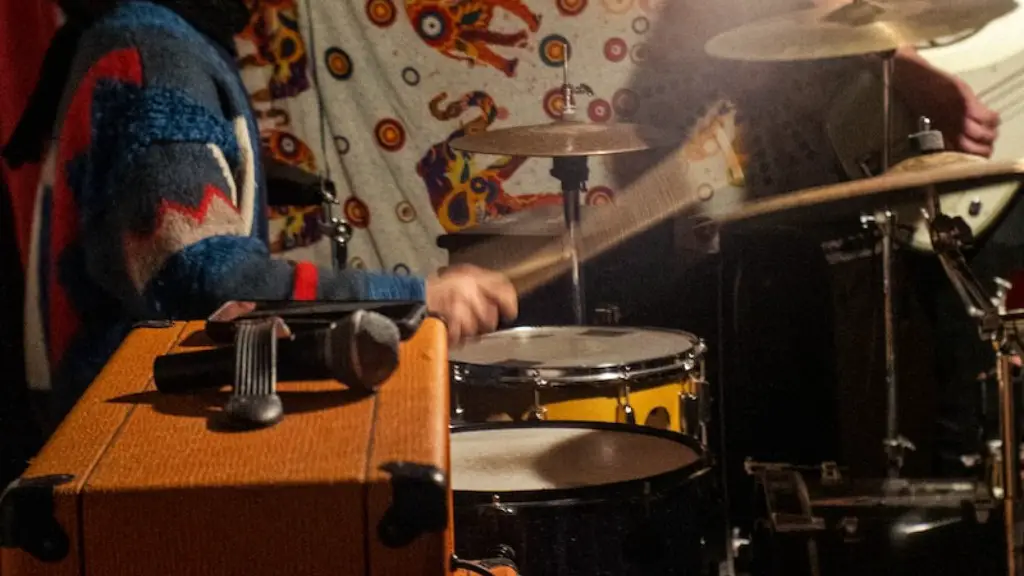A still life is a picture that contains only inanimate objects—usually commonplace objects that are not usually considered art. A still life can depict practically anything, from fruits and flowers to books and bottles. The subject matter is usually simple and uncluttered, so that the viewer can appreciate the beauty of the individual objects.
A still life is a work of art that depicts inanimate objects, usually arranged in a particular way. To compose a still life, the artist must first decide on the objects to include and their placement within the composition. The arrangement of the objects should be pleasing to the eye and should convey a certain message or mood. The lighting of the still life is also important, as it can create a specific atmosphere.
What are the basic rules of still life composition?
1. Photograph the details to bring your composition to life.
2. Use balance and symmetry to draw the viewer’s eye.
3. Use simple shapes as a template.
4. Use overlap to emphasise volume and depth.
5. Break the monotony to create interest.
6. Create frames to compose multiple subjects.
7. Focus your still life composition around a hero object.
When drawing a sketch, it is important to focus on the shapes and not worry about making things look “pretty.” This will help to create a more accurate sketch.
What is composition in still life drawing
A still life composition is a painting or drawing of an arrangement of inanimate objects, typically including natural items like flowers, vegetables, and fruits, as well as man-made items like bottles, books, and vases.
The composition of a still life can be complex, with a variety of elements to consider, but there are a few basic guidelines that will help you create a pleasing and balanced image.
Firstly, think about the overall shape of your composition. An easy way to do this is to imagine it as a rectangle or square, and then fill that space with your objects. Try to vary the sizes and shapes of the objects, and consider adding some negative space (areas without any objects) to create a sense of balance.
Next, think about the colors in your painting. A good way to create interest is to use a range of colors, including both light and dark hues. You can also create contrast by using complementary colors (colors that are opposite each other on the color wheel) such as orange and blue.
Finally, pay attention to the values in your painting. This refers to the lightness or darkness of the colors. Using a range of values will add depth and dimension to
Flowers:
Still lifes featuring flowers are perhaps the most popular, and can be found in art from all cultures and periods. These paintings often celebrate the beauty of nature, and the fragility of life.
Banquet or Breakfast:
Still lifes featuring food are also quite popular, and can represent the abundance and pleasure of a good meal. These paintings often feature an array of colorful and tempting dishes, and can convey a sense of luxury or abundance.
Animal(s):
Still lifes featuring animals are less common, but can be found in art from many cultures and periods. These paintings often explore the relationship between humans and animals, and can be either playful or serious in tone.
Symbolic:
Still lifes featuring symbolic objects are also quite popular, and can be found in art from all cultures and periods. These paintings often explore the meaning of life and death, and can be both deeply moving and thought-provoking.
What makes a bad composition in art?
If you want to create a strong piece of art, you need to have a strong composition. This means planning out the placement of your elements and executing it in a way that is pleasing to the eye. If your composition is weak, then your work is also weak.
There are four main types of still life: flower pieces, breakfast or banquet pieces, animal pieces, and “vanitas” pieces. Flower pieces are often used to demonstrate the artist’s technical skill and drawing ability. Breakfast or banquet pieces usually include food items, and may be intended to show off the artist’s skill in painting different textures and colors. Animal pieces may be intended to capture the animal’s beauty, or to show off the artist’s skill in painting fur or feathers. “Vanitas” pieces are often somber in tone, and may include skulls or other symbols of death.
When starting a still life what would you do first?
When creating objects for a 3D scene, it’s important to start with a wire frame. This will give you the basic shape of the object, which you can then add surface area and details to. It’s also important to think of your objects as three-dimensional, rather than two-dimensional. This will help you create a more realistic and believable scene.
This still life only contains one object. This is okay! Many still lifes have multiple objects, but they don’t have to. This still life is just as valid as any other.
What makes a successful still life
artists must have an understanding of visual balance to create an appealing still life composition Visual balance and composition refer to the structure of a still life, from color and value to the path the viewer’s eye takes as they look at the painting.
Some principles of organization affecting the composition of a picture are: This refers to the Gestalt laws of organization, which include principles such as proximity, similarity, and closure.
What are the 3 rules of composition in art?
The Rule of Thirds
This is a classic rule in composition which basically involves dividing your frame into thirds, both horizontally and vertically, and placing your subject along those lines, or at the points where they intersect. This creates a more balanced and pleasing composition, and also helps to lead the eye around the frame.
Iconic
An iconic image is one that is immediately recognisable and iconic compositions are usually quite simple, with the subject placed in the centre of the frame. This can work well for certain subjects, but can also look quite static.
Leading the Eye
This is a technique where you use elements in the frame to lead the eye towards your subject. This could involve placing your subject off-centre, using lines or patterns to guide the eye, or using colour to contrast your subject from the rest of the frame.
There are many different types of composition, each with their own purpose and focus. Exposition is all about describing and explaining something, usually in a fairly objective manner. Narration is all about telling a story, often from a first-person perspective. Argumentation is all about trying to persuade the reader to see your point of view, using evidence and reasoning.
What are themes for still life
A still life painting can be personal, cultural, societal, mythological, religious or philosophical and existential. Themes can be based on material qualities, such as color or texture.
Still Life paintings are a type of artwork that depict inanimate objects, typically ones that areassociated with daily life. The term can also refer to paintings that depict natural scenes, such as fruit, flowers, or landscapes. WhileStill Life paintings may not be as emotionally stirring as other genres, they can be very beautiful and serene. Many Still Life paintings are highly detailed, and can take a great deal of time to complete.
What is the difference between still life and life drawing?
A still life is a drawing or painting that focuses on still objects. The subject matter is inanimate and never moves, typically with a focus on household objects, flowers, or fruits. Still life work contrasts figure drawing which focuses on a live human model.
The Rule of Thirds is a guideline which states that an image should be divided into thirds, both horizontally and vertically, so that there are nine parts. The four points where the lines intersect are usually the strongest focal points in the image.
Balance and Symmetry can be used to create an image that feels stable and balanced. This can be achieved by placing the subject in the middle of the frame, or by using leading lines to draw the viewer’s eye around the image.
Eye-Level Framing is when the camera is positioned at the same level as the subject’s eyes. This can create a more intimate feeling, as if the viewer is looking into the subject’s eyes.
Depth of Field is the distance between the nearest and farthest objects in an image that appear in focus. A deep depth of field means that everything in the image is in focus, while a shallow depth of field means that only the subject is in focus and the background is blurred.
Deep Space Composition is when the subject is placed in the foreground, middle ground, and background of the image. This can create a sense of depth and scale.
What are the 5 rules of composition
In order to create a good composition in your photography, there are a few key elements to keep in mind. Avoid having too much negative or empty space, as this can make your photo seem unbalanced. Instead, try to embrace lines and use the rule of thirds to create depth in your photos. By having a clear foreground, middleground, and background, you will be able to create a photo with more depth and interest.
1. Create a focal point: Make sure there is one element in your composition that really stands out. This will be the element that attracts the most attention.
2. Create visual hierarchy: Ensure that the elements in your composition are arranged in a way that makes sense. The most important elements should be placed in positions of prominence, while the less important ones can be placed in less conspicuous positions.
3. Use leading lines: Leading lines are lines that guide the eye through the composition. They can be used to direct attention to the focal point or to create a sense of movement.
4. Scale elements to create effects: The size of the elements in your composition can be used to create various effects. For example, using large elements can make something look more important, while using small elements can make it look more delicate.
5. Balance your elements: Make sure that the composition looks balanced. This means that there should be an equal distribution of elements on either side of the focal point.
6. Use contrast to send a message: Contrast can be used to highlight certain elements or to make a statement. For example, you can use a light color against a dark background to make an element stand out.
7.
Warp Up
A still life is a drawing or painting of an inanimate subject, typically a group of objects. The term can also refer to the subject matter of the work itself. A still life often includes Hampton Court Palace flowers and fruit, as well as objects that can be found in a person’s everyday life, like books and bottles.
To create a still life, an artist arranges their subject matter in a specific way. They then use various art techniques to render the scene. Often, light and shadow are used to create a sense of depth and create an interesting composition.
By following a few simple steps, anyone can compose a still life. First, choose a subject matter and arrange it in a pleasing way. Second, use a tripod or set the camera on a timer to avoid camera shake. Third, take a variety of shots from different angles and distances. And fourth, edit the photos to create a cohesive collection. With a little time and practice, anyone can create beautiful still life photos.


